Squeeze Film Air Damping in Tapping Mode Atomic Force Microscopy
Abstract
:1. Introduction
2. Squeeze Film Damping of the Cantilever
2.1. Model for Squeeze Film Damping
2.2. Factor of the Cantilever Squeeze Film Damping
2.3. Dynamic Amplification Factor of the Cantilever
3. Experiment Results and Discussion
3.1. Experimental System Construction
3.2. Test of the Effect of Squeeze Film Damping in Tapping Mode AFM
4. Conclusions
Acknowledgments
Author Contributions
Conflicts of Interest
References
- Vasić, B.; Kratzer, M.; Matković, A.; Nevosad, A.; Ralević, U.; Jovanović, D.; Ganser, C.; Teichert, C.; Gajić, R. Atomic force microscopy based manipulation of graphene using dynamic plowing lithography. Nanotechnology 2013, 24, 015303. [Google Scholar] [CrossRef] [PubMed]
- Martín, C.; Rius, G.; Borrisé, X.; Pérez-Murano, F. Nanolithography on thin layers of PMMA using atomic force microscopy. Nanotechnology 2005, 16, 1016–1022. [Google Scholar] [CrossRef]
- Hong, X.; Yang, Y.; Wang, Y. Automatic hammering of nano-patterns on special polymer film by using a vibrating AFM tip. Nanoscale Res. Lett. 2012, 7, 456. [Google Scholar] [CrossRef] [PubMed]
- Liu, W.; Yan, Y.; Hu, Z.; Zhao, X.; Yan, J.; Dong, S. Study on the nano machining process with a vibrating AFM tip on the polymer surface. Appl. Surf. Sci. 2012, 258, 2620–2626. [Google Scholar] [CrossRef]
- Tseng, A.A. Advancements and challenges in development of atomic force microscopy for nanofabrication. Nono Today 2011, 6, 493–509. [Google Scholar] [CrossRef]
- Heyde, M.; Rademann, K. Dynamic plowing nanolithography on polymethylmethacrylate using an atomic force microscope. Rev. Sci. Instrum. 2001, 72, 136. [Google Scholar] [CrossRef]
- Yan, Y.; He, Y.; Geng, Y.; Hu, Z.; Zhao, X. Characterization Study on Machining PMMA Thin-Film Using AFM Tip-Based Dynamic Plowing Lithography. Scanning 2016, 38, 612–618. [Google Scholar] [CrossRef] [PubMed]
- Jung, B.; Jo, W.; Gwon, M.J.; Lee, E.; Kim, D.-W. Scanning probe lithography for fabrication of Ti metal nanodot arrays. Ultramicroscopy 2010, 110, 737–740. [Google Scholar] [CrossRef] [PubMed]
- Hoummady, M.; Farnault, E. Enhanced sensitivity to force gradients by using higher flexural modes of the atomic force force microscope cantilever. Appl. Phys. A 1998, 66, S361–S364. [Google Scholar] [CrossRef]
- Bowen, J.; Cheneler, D. A Dynamic Model of the Jump-To Phenomenon during AFM Analysis. Langmuir 2012, 28, 17273–17286. [Google Scholar] [CrossRef] [PubMed]
- Gunther, P.; Fischer, U.C.; Dransfeld, K. Scanning near-field acoustic microscopy. Appl. Phys. B 1989, 48, 89–92. [Google Scholar] [CrossRef]
- Leveque, G.; Girard, P.; Belaidi, S.; Cohen Solal, G. Effects of air damping in noncontact resonant force microscopy. Rev. Sci. Instrum. 1997, 68, 4137–4144. [Google Scholar] [CrossRef]
- Pandey, A.K.; Pratap, R. Effect of flexural modes on squeeze film damping in MEMS cantilever resonators. J. Micromech. Microeng. 2007, 17, 2475–2484. [Google Scholar] [CrossRef]
- Griffin, W.S.; Richarson, H.H. A study of squeeze film damping. ASME J. Basic Eng. 1966, 88, 451–456. [Google Scholar] [CrossRef]
- Bao, M.; Yang, H. Squeeze film air damping in MEMS. Sens. Actuators A 2007, 136, 3–27. [Google Scholar] [CrossRef]
- Humar, J.L. Dynamics of Structures; CRC Press: London, UK, 2012. [Google Scholar]
- Zypman, F. Intrinsic dissipation in atomic force microscopy cantilevers. Ultramicroscopy 2011, 111, 1014–1017. [Google Scholar] [CrossRef] [PubMed]
- Zypman, F. Internal damping for noncontact atomic force microscopy cantilevers. J. Vac. Sci. Technol. B 2010, 28, C4E24–C4E27. [Google Scholar] [CrossRef]
- Wang, L. The role of damping in phase imaging in tapping mode atomic force microscopy. Surf. Sci. 1999, 429, 178–185. [Google Scholar] [CrossRef]
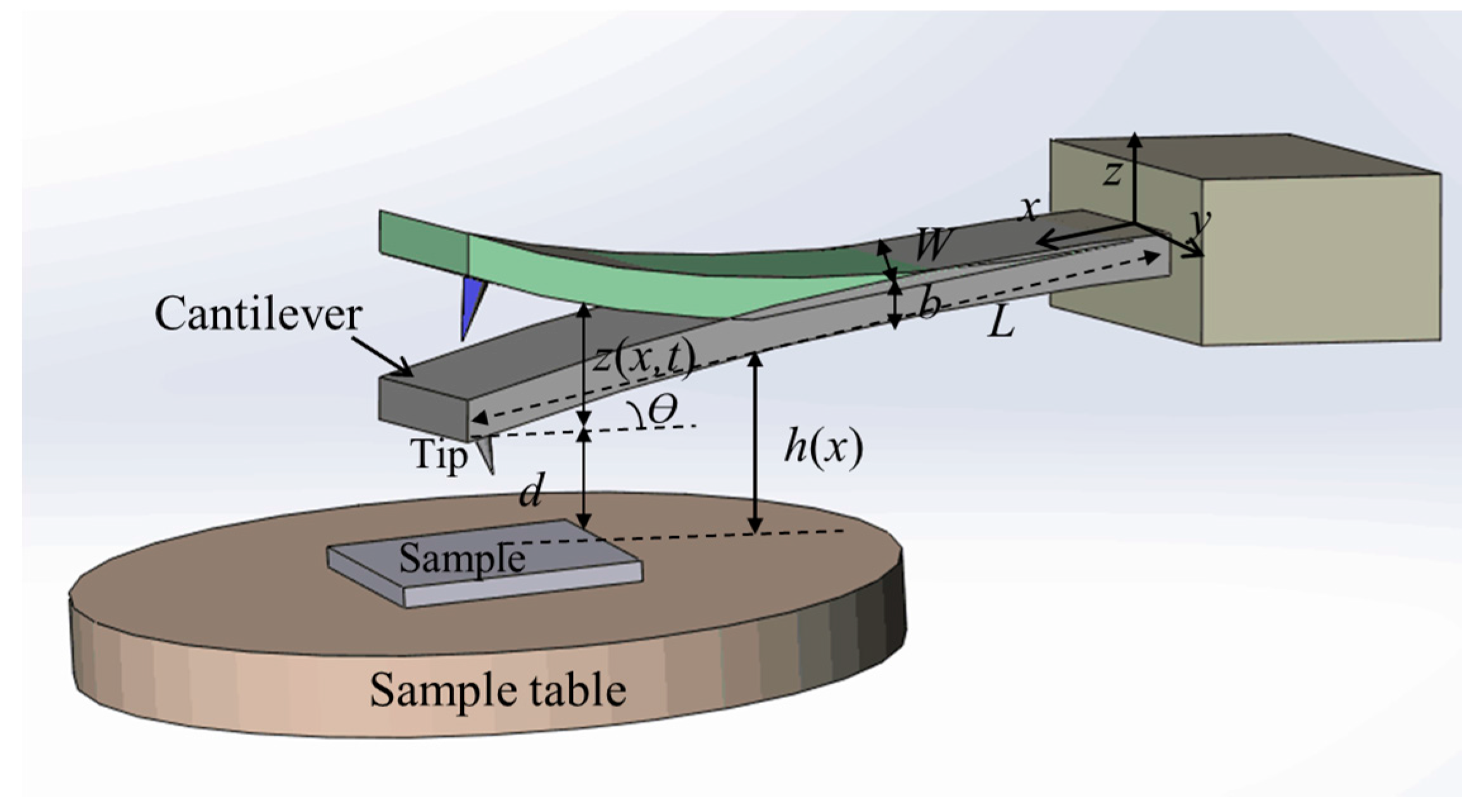
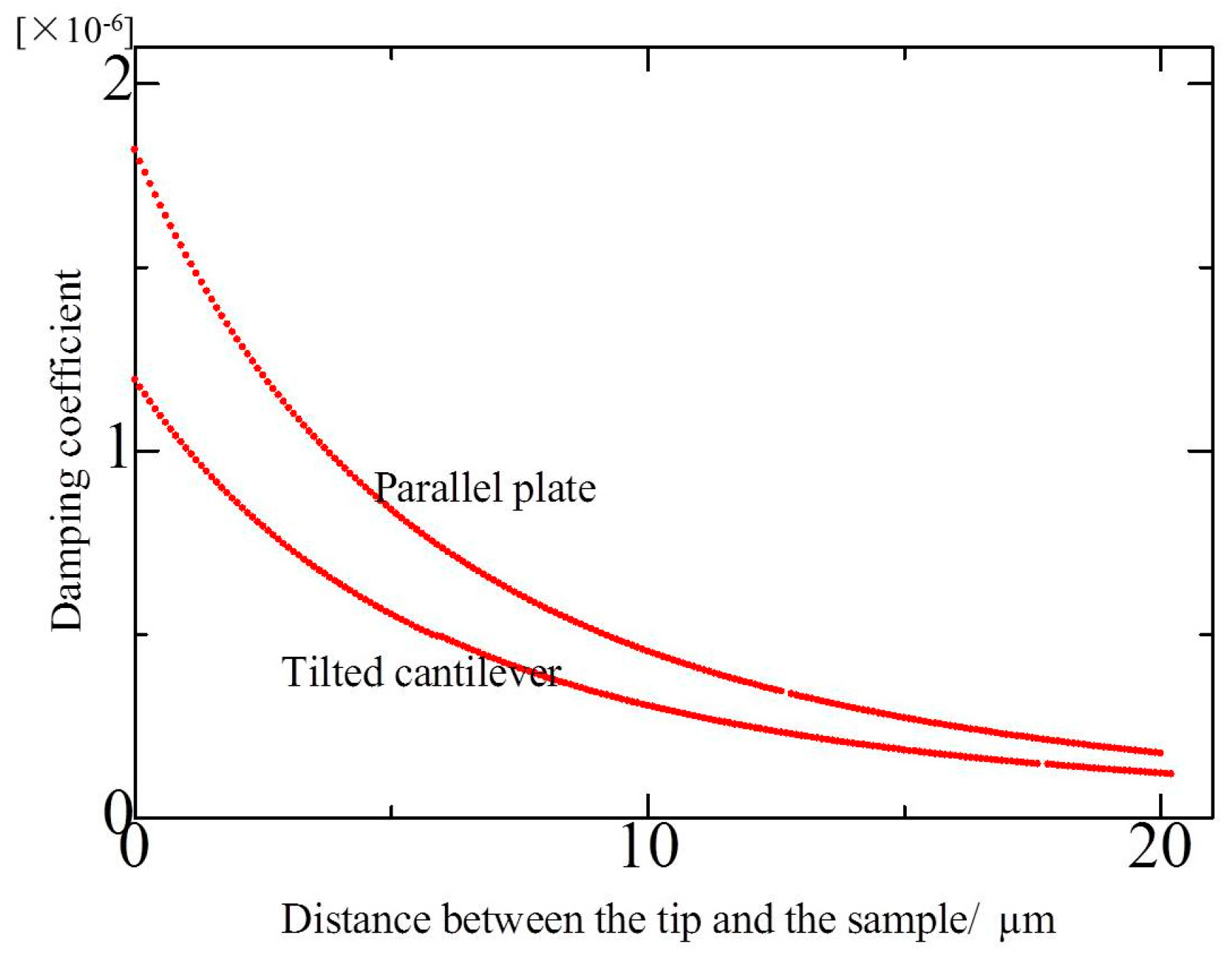
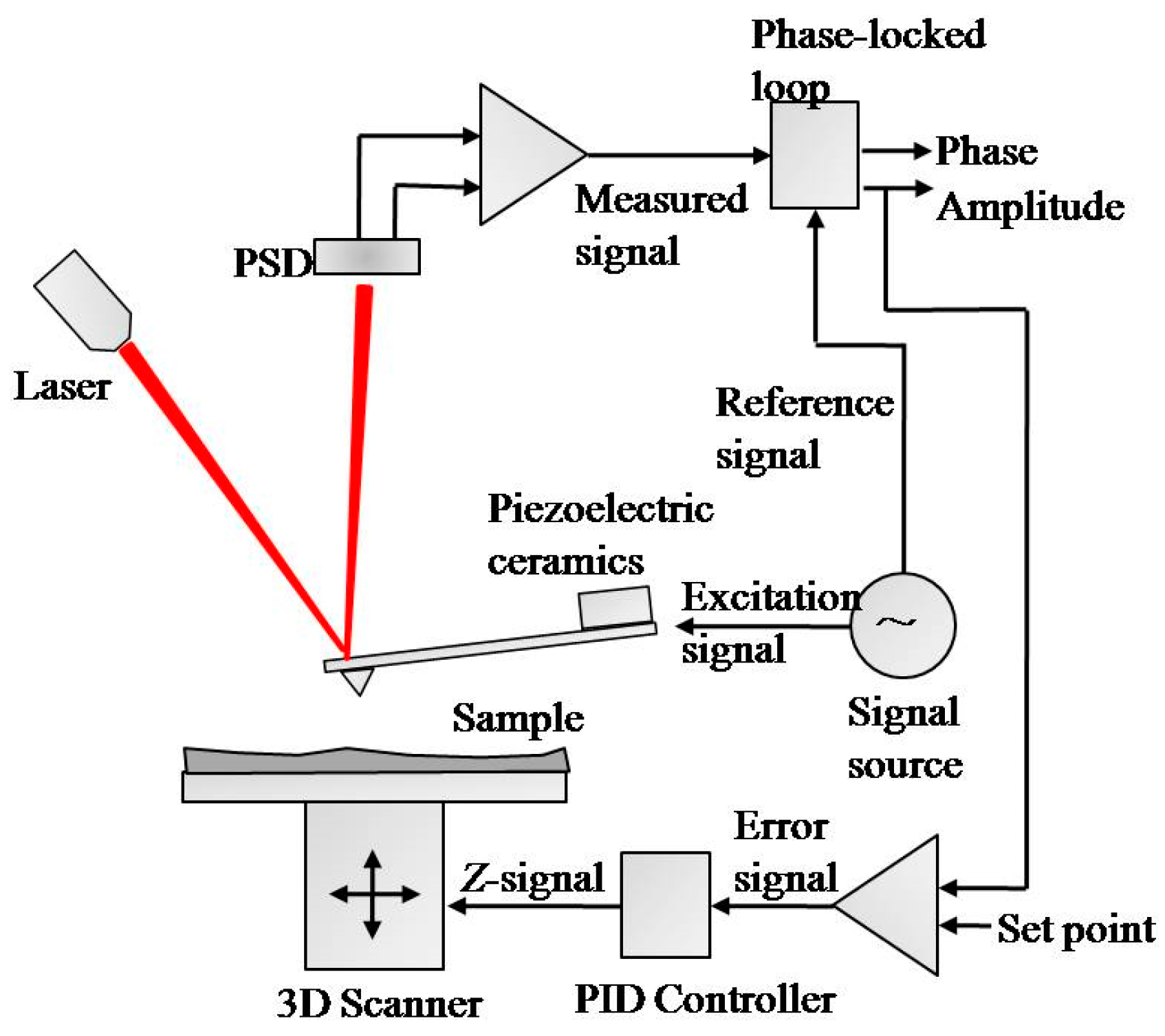
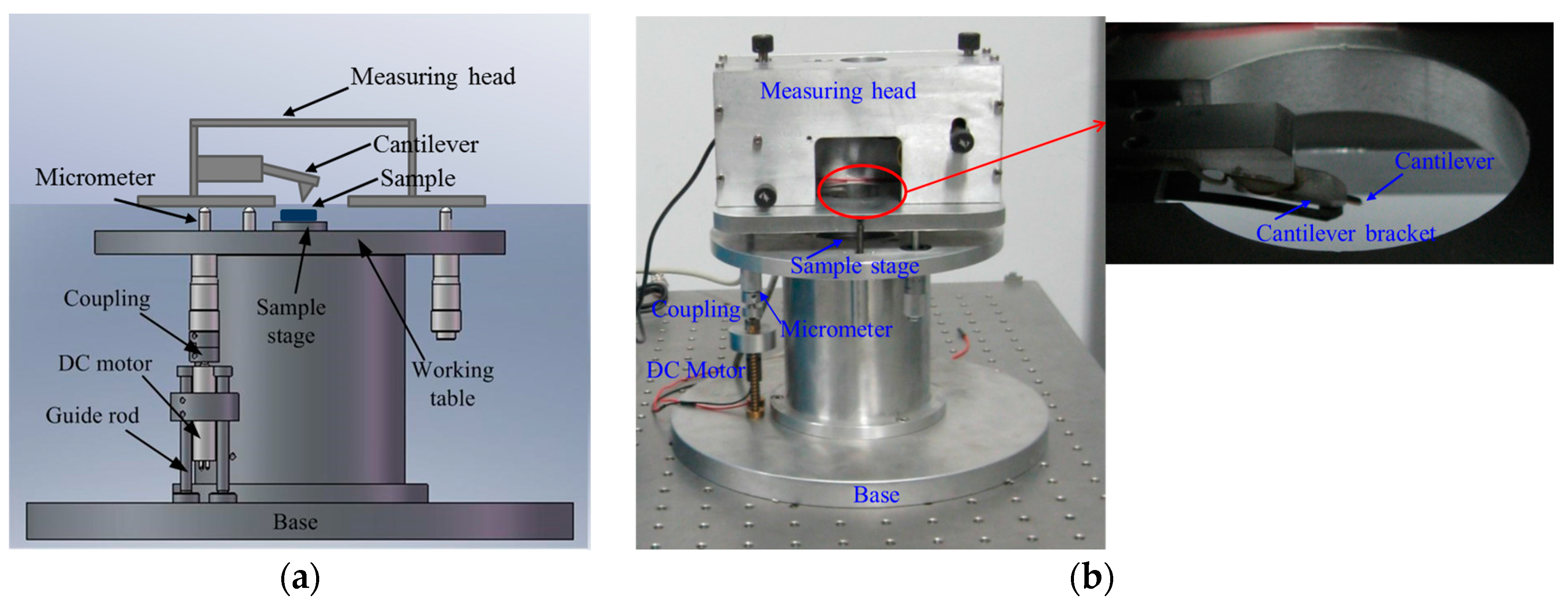
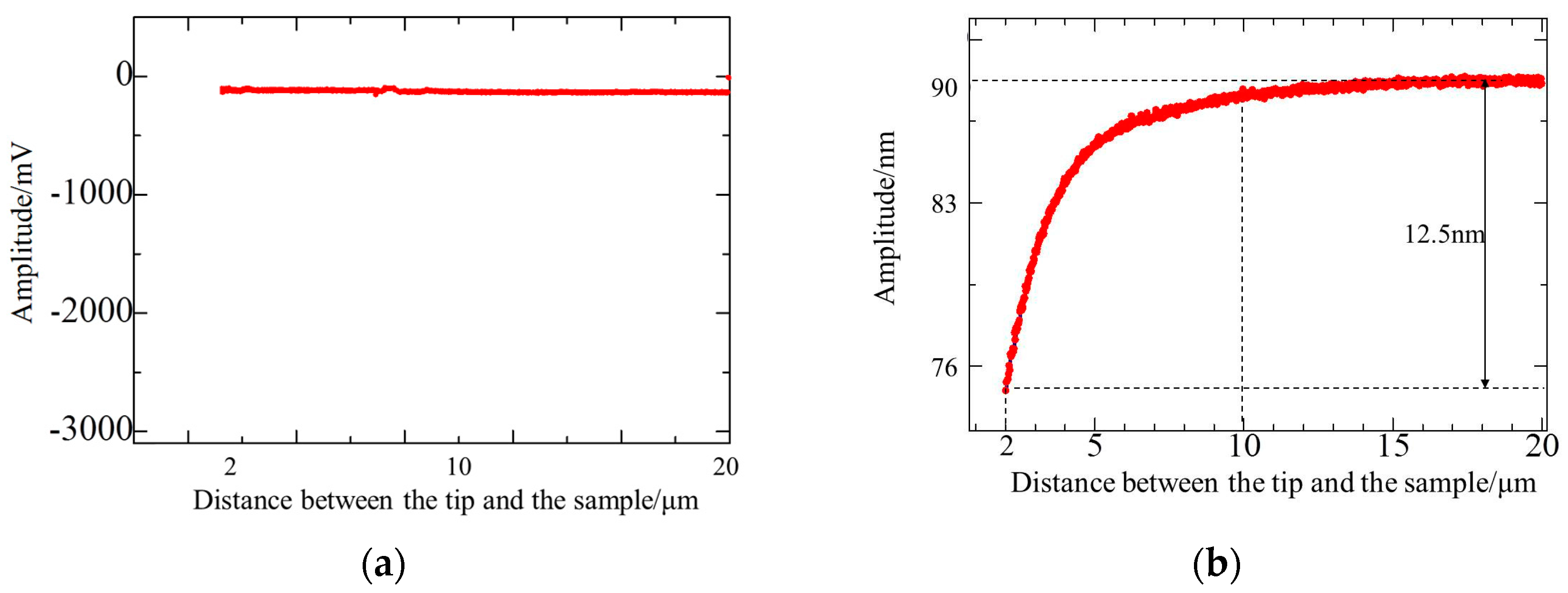
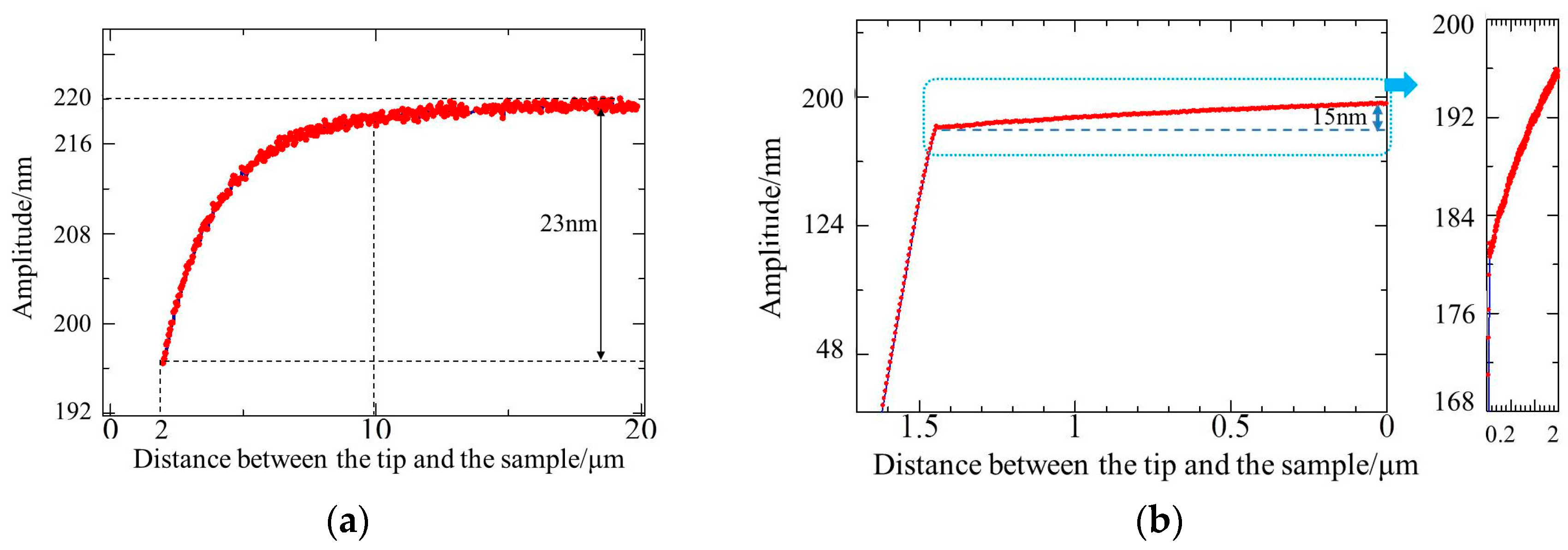
© 2017 by the authors. Licensee MDPI, Basel, Switzerland. This article is an open access article distributed under the terms and conditions of the Creative Commons Attribution (CC BY) license (http://creativecommons.org/licenses/by/4.0/).
Share and Cite
Zhao, Y.; Huang, Q.; Zhang, L.; Zhang, Y.; Cheng, R. Squeeze Film Air Damping in Tapping Mode Atomic Force Microscopy. Micromachines 2017, 8, 226. https://doi.org/10.3390/mi8070226
Zhao Y, Huang Q, Zhang L, Zhang Y, Cheng R. Squeeze Film Air Damping in Tapping Mode Atomic Force Microscopy. Micromachines. 2017; 8(7):226. https://doi.org/10.3390/mi8070226
Chicago/Turabian StyleZhao, Yang, Qiangxian Huang, Liansheng Zhang, Yong Zhang, and Rongjun Cheng. 2017. "Squeeze Film Air Damping in Tapping Mode Atomic Force Microscopy" Micromachines 8, no. 7: 226. https://doi.org/10.3390/mi8070226




